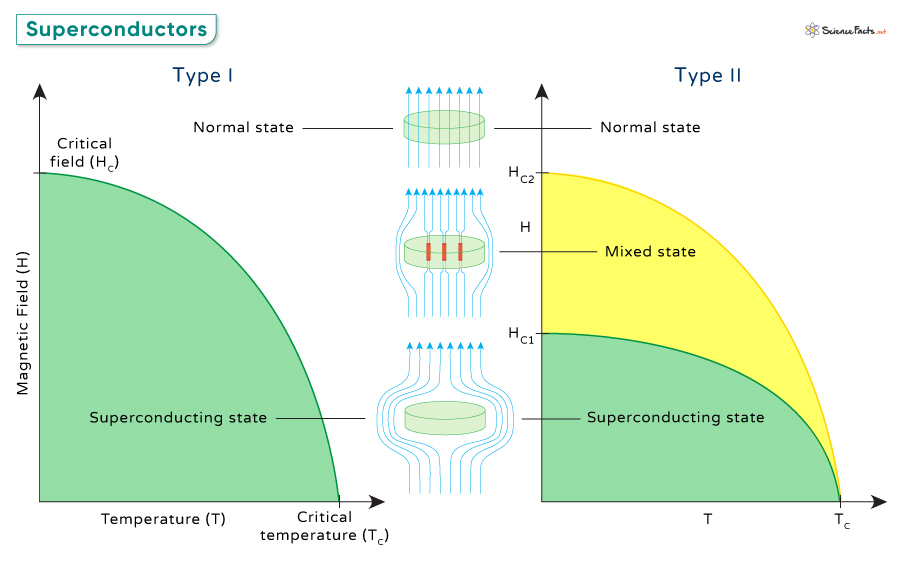Types I Superconductors
Type II Superconductors
Differences Between Type I and Type II Superconductors
Type I superconductors are typically elemental metals like lead and mercury. The critical field for a Type I superconductor is temperature-dependent and can be described by the equation: Where: – HC(T) is the critical field at temperature T. – HC(0) is the critical field at absolute zero temperature. – T is the temperature of the superconductor. – TC is the critical temperature at which the material becomes superconducting. Vortices are tiny “tubes” of normal material surrounded by superconducting regions. Imagine a sponge soaked in water. The sponge has holes (vortices) where the water (magnetic field) can get inside. The sponge (superconductor) is mostly filled with water but has specific holes where the water can penetrate. Type II superconductors have two critical magnetic field values: a lower critical field (Hc1) and an upper critical field (Hc2). Below Hc1, they behave like Type I superconductors and expel all magnetic fields (Meissner effect). Above Hc2, they lose their superconducting state entirely and become normal conductors. Between Hc1 and Hc2, they enter a region known as “mixed state”, where the vortices form but still retain their superconducting properties. Type II superconductors include high-temperature superconductors like YBCO (yttrium barium copper oxide) and many niobium-based alloys.
Flux Pinning
Flux pinning is a phenomenon observed in Type II superconductors where magnetic flux lines are trapped within the material. This occurs because the superconductor contains structural defects, impurities, or grain boundaries that create regions where the vortices can become anchored. When an external magnetic field is applied, these vortices become trapped in these weaker areas, preventing their movement. This stabilization of the vortices helps the superconductor maintain its zero electrical resistance, even in the presence of an external magnetic field.
